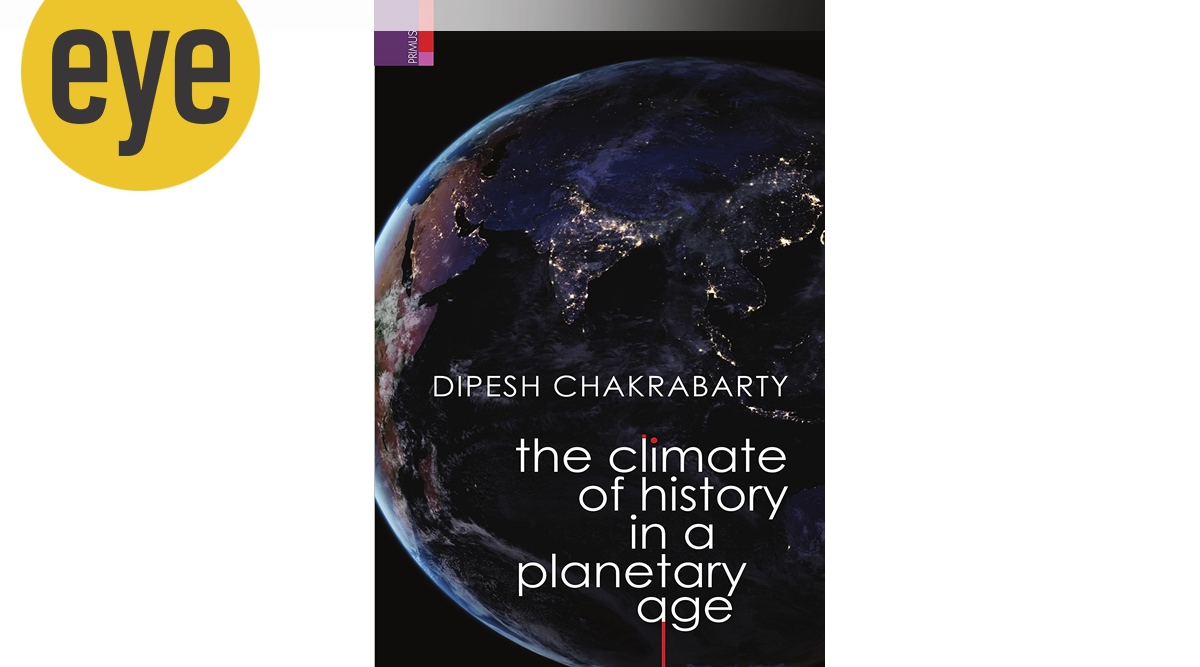Written by Angshuman Kar

Published in the midst of the ongoing COVID-19 pandemic, Dipesh Chakrabarty’s The Climate of History in a Planetary Age suggests how humanities scholars should confront the challenges of climate change that “upends long-standing ideas of history, modernity and globalisation.” Chakrabarty’s book also proves that a historian’s engagement in this age of anthropocene should not only be with the globe but also with the planet.
The book shows a significant shift in Chakrabarty’s journey as a historian. The shift in his perspective, as he himself acknowledges in the book, was caused by the devastating bushfire of 2003 that took the lives of innumerable humans and non-humans in Australia. In fact, the book could also be seen as the outcome of a deep sense of bereavement caused by those losses that made Chakrabarty “curious about the history of this particular fires” that soon “brought the news of anthropogenic climate change into the human centric thought world” that he used to inhabit then.
ALSO READ | Pranay Lal’s new book Invisible Empire: The Natural History of Viruses tells us why microbes matter
The merit of the book lies not only in contextualising the anthropocene and associating it with global politics but also in making a very important distinction between the “globe” and the “planet.” One of the key arguments of the book is that humans should look at themselves simultaneously from two perspectives: the planetary and the global. Chakrabarty argues that we are now in the “planetary age”.
In the postscript to the book, which is a conversation between French philosopher, sociologist and anthropologist Bruno Latour and Chakrabarty, he says that the journey of the global age began from the 15th century onward, whereas the planetary era began at the dawn of the 20th century. For formulating his concept of the “planet”, Chakrabarty is clearly indebted to German philosopher Martin Heidegger and the Earth-system scientists. Chakrabarty refers to Heidegger’s 1938 lecture “The Age of the World Picture” in which he used the expression “planetary imperialism”. To Heidegger, “planet” was Earth as a single planet taken by itself and not conceived of in comparison to other planets. Chakrabarty connects this Heideggerian notion with the Earth-system science that analyses the Earth’s “interacting physical chemical and biological processes.” Drawing upon Heidegger and Earth-system scientists, Chakrabarty argues that whereas the “globe” is an anthropocentric construction, the “planet” is an Earth-centric realisation as it decentres the humans. The globe and the planet, again, represent two categories — globalisation and global warming, which are fundamentally intertwined by modern capitalism and technology. Chakrabarty reiterates the belief of Peter Haff, professor emeritus of geology at Duke University, North Carolina, the US, that the human population now is totally dependent on the existence of the “technosphere”, in that technology has become an indispensable condition for biological living.
Most Read 1Cricket World Cup: Why India is not in the semifinals yet despite winning six out of six games 2‘Ghatiya harkat’, ‘Pathetic’: Pakistan cricket legends livid as Pakistan news channel airs Babar Azam’s purported WhatsApp chats 3‘I will never play Akshay Kumar’s mother ever again in my life,’ says Shefali Shah 4Leo box office collection day 12: Only Rs 67 crore separate Thalapathy Vijay’s blockbuster from breaking Rajinikanth-starrer Jailer’s record 5How gang from Bihar gamed Aadhaar-enabled payment system in Karnataka
Technosphere also has its own agency, irrespective of the human will, and this agency has made the human civilisation cross the threshold of “holocene” and to enter into to the “anthropocene”, an age that is marked by a significant rise in the number of climate refugees, water scarcity as well as a notable increase in the number of natural calamities, such as earthquakes, volcanic eruptions, bushfires and tsunamis.
ALSO READ | What We Lack: Meeta and Rajivlochan’s book Making India Great Again chooses action over nostalgia
A book that moves from Heidegger to geology, from a letter of Rabindranath Tagore to the suicide note of the Hyderabad University student Rohith Vemula, however, does not offer any solution to the climate-related problems and conflicts that are impacting the peace-making processes across the world. Chakrabarty writes, “My hope is that stories that bring our deep and recorded histories together may help generate new perspectives from which to view these conflicts and thus contribute indirectly towards their mitigation.” In fact, the book strongly critiques any partisan view on the problems of climate change and calls for a “new acceptance of universals” to face what political philosopher Hannah Arendt would have called the human condition today.
Also ReadOctober in Books: What to read next, as per the jury‘Job of a scholar is not to become a politician’: Ramachandra GuhaFive poets to read from Palestine and IsraelA detailed account of the life and times of Salar Jung, the forgotten Diw…
(The writer is professor of English, The University of Burdwan, West Bengal)
© The Indian Express Pvt Ltd


